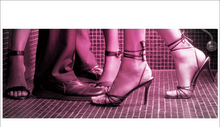Thinking like a designer can transform the way you develop products, services , processes- and even strategy .
Thomas Edison created the electric bulb and the wrapped an entire industry around it . The lightbulb is most often thought of as his signature invention , but Edison understood that the bulb was little more than a parlor trick without a system of electric power generation and transmission to make it truly useful. So he created that , too.
Thus Edison's genius lay in his ability to conceive of a fully developed marketplace, not simply a discrete device. He was able to envision how people would want to use what he made, and he engineered towards that insight.
Edison's approach was an early example of what is now called " Design Thinking " - a methodology that imbues the full spectrum of innovation activities with a human - centered design ethos . By this I mean that innovation is powered by a thorough understanding , through direct observation ,of what people want and need in their lives and what they like or dislike about the way particular products are made , packaged, marketed, sold , and supported .
Many people believe that edison's greatest invention was modern R and D laboratory and methods of experimental investigation . Edison wasn't a narrowly specialized scientist but a broad generalist with a shrewd business sense .In his Menlo park , New Jersey , Laboratory he surrounded himself with gifted tinkerers, improvisers , and experimenters . Indeed , he broke the mold of the "lone genius inventor " by creating a team based approach to innovation .Although Edison biogrphers write of the camaraderie enjoyed by this merry band , the process also featured endless rounds of trail and error -the "99% perspiration " in Edison's famous definition of genius . His approach was intended not to validate preconceived hypotheses but to help experiments learn something new from each iterative stab . Innovation is hard work ; Edison made it a profession that blended art, craft , science , business, and an astute understanding of customers and markets .
Design Thinking is a lineal descendant of that tradition .Put simply, it is a discipline that uses the designer's sensibility and methods to match people's needs with what is technologically feasible and what a viable business strategy can convert into customer value and market opportunity . like Edison's painstaking innovation process , it often entails a great deal of perspiration .
I believe that design thinking has much to offer a business world in which most management ideas and best practices are freely available to be copied and exploited .Leaders now look to innovation as a principle source of differentiation and competitive advantage ; they would do well to incorporate design thinking into all phrases of the process .
This arcticle was published in Harvard Business Review and it represents IDEO's approach to developing the methods and sensibility of a designer .
Subscribe to:
Post Comments (Atom)







No comments:
Post a Comment